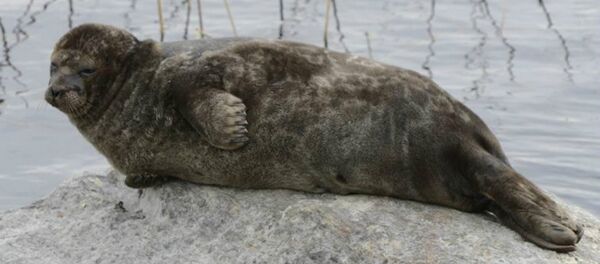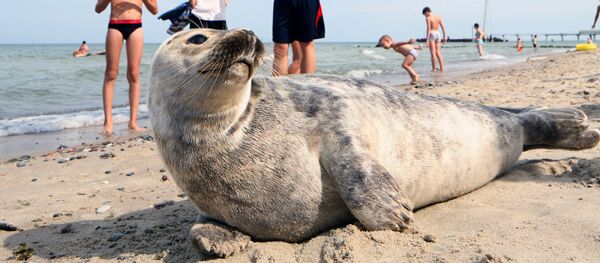In a pilot project, which is a collaboration between the Museum of Natural History and the University of Stockholm, seals will be equipped with transmitters to collect data about depth, water temperature and salinity from the surface down to the sea floor. The transmitter is glued on the seal's body and falls off automatically when the animal sheds fur. The idea, however, is not new and has been tried before with walruses off the coast of Greenland.
"The gray seal is not affected by the the weather and is capable of moving over large areas to gather information for months," Olle Karlsson, seal researcher at the Museum of Natural History, told Swedish national broadcaster SVT.
Grey seal bulls aren't something you see everyday in Langstone Harbour, common seals are more..common…here. A treat to see one visiting:) pic.twitter.com/LCtnsV0VUD
— Wez Smith (@WordsFromWez) 18 февраля 2017 г.
Using seals has additional benefits for the budget, as no special staff or expensive devices are needed to explore the oceanic depths. According to Karlsson, seals have proven to be a great tool for gathering oceanographic data in hard-to-reach areas.
"One seal has been registered as moving to Estonia and taking a tour around the island of Gotland, which only took about a couple of days," Karlsson explained.
A hundred years ago, there were 100,000 gray seals in the Baltic Sea, but in the 70s the gray seal was on the verge of extinction and was about to disappear entirely due to pollution. Today, however, the seal population has grown to more than 40,000 in the Baltic Sea, whereas the Stockholm archipelago alone is estimated to be home to about 5,000 seals.
"When I began working as a supervisor, I never thought that gray seals would fare that well, but today's situation gives me hope for other vulnerable species as well," Gunnar Hjertstrand of the Archipelago Foundation, who has worked as a supervisor since the 70s, told SVT.
Baby Boom of Baltic Grey Seal Pups at Kolmården. #zooborns https://t.co/M6TkxJiTJ7 pic.twitter.com/weWb3lpPXc
— Karel Peka (@karelpeka) 11 марта 2017 г.
The gray seal is found on both shores of the Atlantic Ocean. Bulls in the eastern Atlantic population are known to reach a length of 3.3 meters and a weight of 310 kilograms. Around a month after birth, the gray seal grows dense waterproof fur and leaves the breeding grounds for the sea to learn to fish for itself.
Grey Seal pic.twitter.com/wywZJRBHDB
— Actual CrimeLord Deo (@DeoTasDevil) 29 апреля 2016 г.
Never miss a story again — sign up to our Telegram channel and we'll keep you up to speed!




